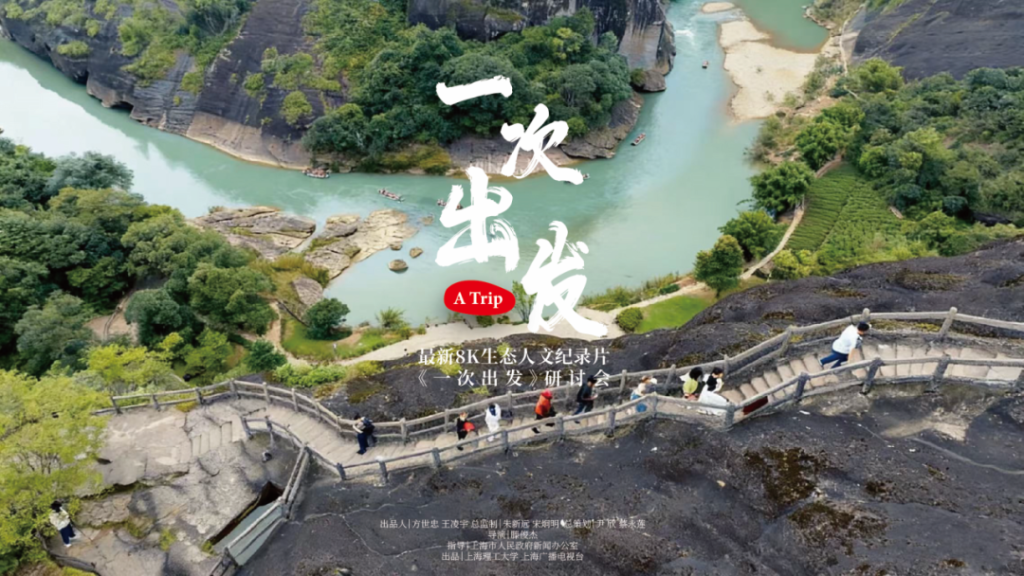
"Historical Records" records that "the kings of the past three dynasties were all between Heluo and Luo", which means that during the Xia, Shang and Zhou dynasties, they all established their capitals in this land where the Yellow River and Luoshui converge.
What is the landscape of this land? Why did the rise of the dynasty begin here? In the turmoil of prehistoric cultures in various regions, why has the Heluo region become the gathering and leading force of Chinese civilization? What wisdom and ingenuity did the ancestors living here contribute?

"Looking for Ancient China·He Luo Ji" poster
The large-scale documentary series "Searching for Ancient China·Heluo Ji", jointly produced by China Central Radio and Television and the State Administration of Cultural Heritage, will be broadcast on the CCTV Comprehensive Channel (CCTV-1) at 22:30 on November 13, CCTV.com It will be broadcast simultaneously with CCTV-1.
The 5-episode documentary focuses on the Heluo region of the Central Plains, which the ancients called "in the middle of heaven and earth". Based on the latest archaeological excavations and historical research results of many sites, it witnesses the historical process of the diverse and integrated pattern of the origin and formation of Chinese civilization, and tells the story of the first wide-area dynasty. The story before birth.
"Looking for Ancient China·Heluo Ji" records at close range 15 prehistoric sites that are of great significance to the study of the origin of Chinese civilization, including the newly excavated Suyang Site in Yiyang, Henan, and the Shuanghuaishu Site in Gongyi.

Stills from "Looking for Ancient China·He Luo Ji"
From the unique natural geographical location of the Heluo area, to the labor scenes of ancestors producing crops, raising silkworms and reeling silk, from repairing houses to settling into towns, from class differentiation to ethnic integration... the program relies on the archaeological results of many sites and combines documentary records And scientific investigation, based on the development and evolution of the Heluo area itself, and at the same time comparing the prehistoric cultural features of surrounding areas, systematically sorting out the history of Chinese civilization before the establishment of the Xia Dynasty from the aspects of location advantages, agriculture, handicrafts, city construction, cultural integration, etc. The formation process of the pattern from diversity to integration, and the important role played by the Heluo region in it.
"Searching for Ancient China: Heluo Ji" has many archaeological results disclosed for the first time or in depth: the Miaodigou Cultural Museum in Sanmenxia City, Henan Province contains a pottery sherd with fingerprints and cloth patterns dating back more than 6,000 years ago. These traces Was it an unintentional act by the craftsman during the production process, or did he want to leave his own "signature" on his work?

Stills from "Looking for Ancient China·He Luo Ji"
At the Shuanghuaishu Site in Gongyi, Henan, the dental caries rate among residents is as high as 70%. The youngest individual with dental caries was only 4 years old. What is the reason for this? The structure of the carbonized silk fabric unearthed from the Wanggou site in Xingyang, Henan is an extremely complex "four-meridian twister". Why was such a precious item buried underground? These contents will be presented wonderfully in the program.
"The river produces pictures, Luo produces books, and the saints follow them." The mysterious "River Pictures and Luo Shu" are regarded by experts as the origin of Chinese culture. Legend has it that Dayu delimited the nine states based on the "Book of Luo", and Heluo lived in Yuzhou among the nine states. Yuzhou was also called "Zhongzhou".
In the inscription "He Zun" on the Western Zhou bronze ware, "Zhai Zi Zhongguo" is the earliest known source of the word "China". The "obsession" with "China" originates from the ancient Chinese idea of "choosing a neutral country." With its geographical advantages, the Heluo area has become the "heaven and earth" that our ancestors longed for.
Going back further, the Yangshao culture, which dates back more than 6,000 years ago, was gradually reaching its peak on the west side of Heluo. Its rise and spread paved the way for the formation of "early China" in the cultural sense. The suitable and stable climate environment in the Heluo area, in terms of temperature, light, precipitation, soil, terrain and other aspects, has maximized the needs of the ancestors for survival and civilization.
From the dry farming of millet and millet to the planting of various varieties for "abundance of grains", the Heluo region not only provided the ancient ancestors with a more stable and diversified source of food, but also provided opportunities for domestication of domestic animals, development of handicrafts, population agglomeration, and social development. Development provides a relatively stable guarantee.
The Shuanghuaishu site, located at the confluence of the Yellow River and Luoshui River, is considered to be a key material in a key period and key area for the origin of Chinese civilization. This large settlement covering an area of 1.17 million square meters has three inner and outer trenches, neatly arranged large palace-style buildings, and four specially designated tomb areas.

Stills from "Looking for Ancient China·He Luo Ji"
The Shuanghuaishu site demonstrates its aura as the central settlement in this area. It also contains mature construction technology, rigorous planning ideas and a highly cohesive social order. Class differentiation has become an important symbol of the origin of civilization.
A stone carving of an animal head unearthed from the Suyang site is extremely similar to one from the Banlashan Cemetery of the Hongshan Culture, 1,500 kilometers away. The stone ax unearthed from the Qingtai site in Xingyang is a common artifact in the Majiabang, Songze, Liangzhu and other cultures in the middle and lower reaches of the Yangtze River. The Moyu Yazhang from the Huadizui site in Gongyi is considered by experts to have typical characteristics of the Shimao culture in northern Shaanxi.
The different artifacts unearthed from the sites in the Heluo area give a common hint: Heluo, located in the heart of the Central Plains, has become the focus of the convergence and integration of prehistoric cultures in various regions, and is waiting for opportunities to accumulate in the collision and integration, ushering in the Chinese The brilliant dawn of civilization moving from diversity to unity.
The film crew of "Looking for Ancient China·Heluo Ji" visited Henan, Zhejiang, Anhui and other provinces in depth, and focused on photographing more than 100 cultural relics collected in more than 20 museums. At the same time, we learned from others' strong points, interviewed more than 30 authoritative scholars and experts in various disciplines from many universities and research institutions, including the Chinese Academy of Social Sciences, Peking University, Renmin University of China, Henan Museum, etc., and read through "Shangshu", "Zhouli", "Historical Records", etc. More than 30 classic ancient books interpret the important role of the Heluo region in the origin of Chinese civilization from multiple perspectives.
In addition, "Looking for Ancient China·Heluo Ji" continues to deepen the creative concept of "ideology + art + technology", making full use of new technologies such as large-scene 3D scanning and Integrating cultural exchanges with different regions, it promotes the formation of a pluralistic and integrated pattern of Chinese civilization and vividly reflects the development process of the Chinese nation that is different from other civilizations in the world.


